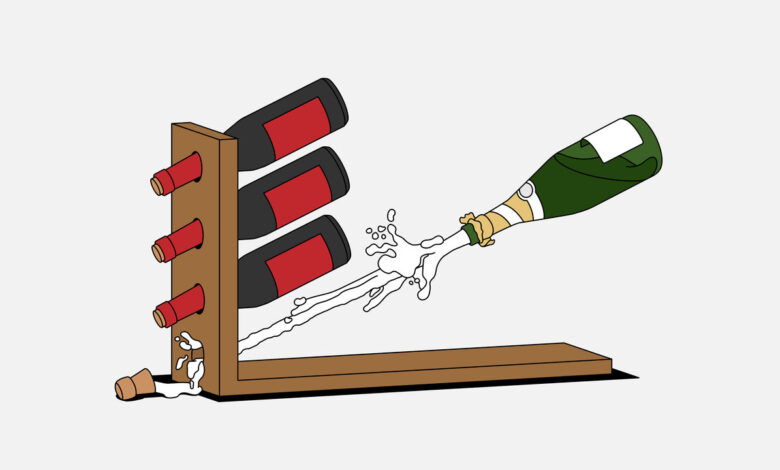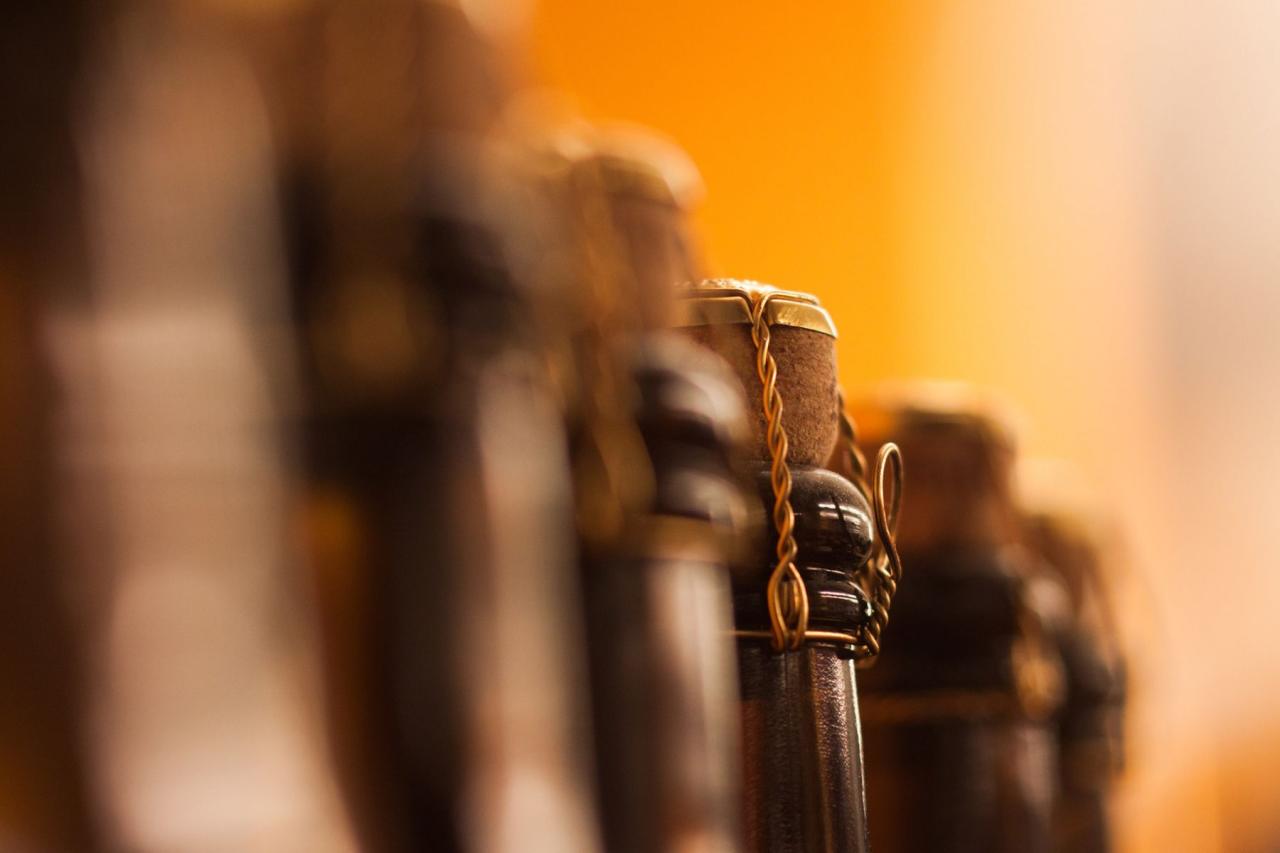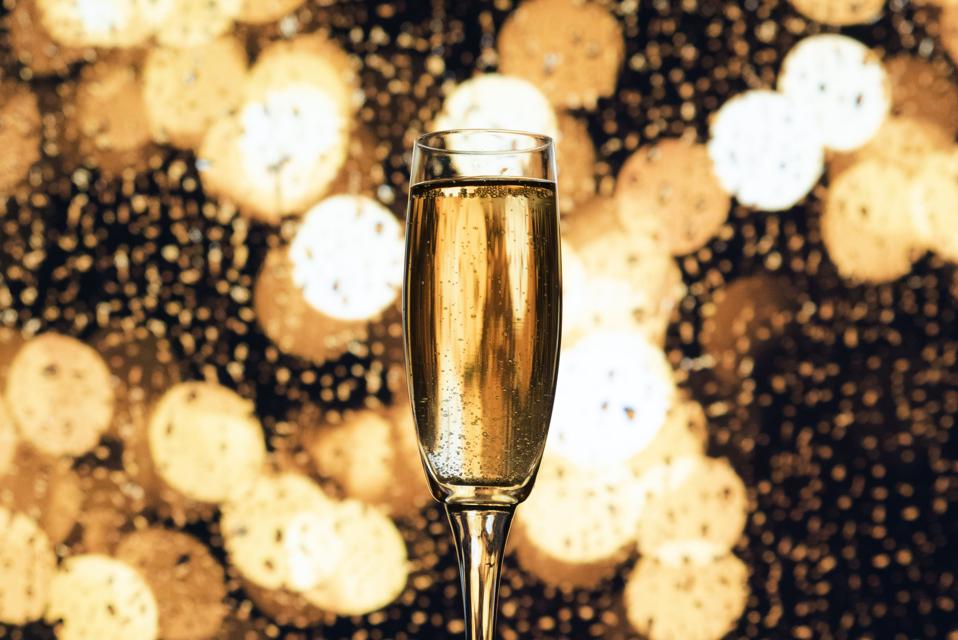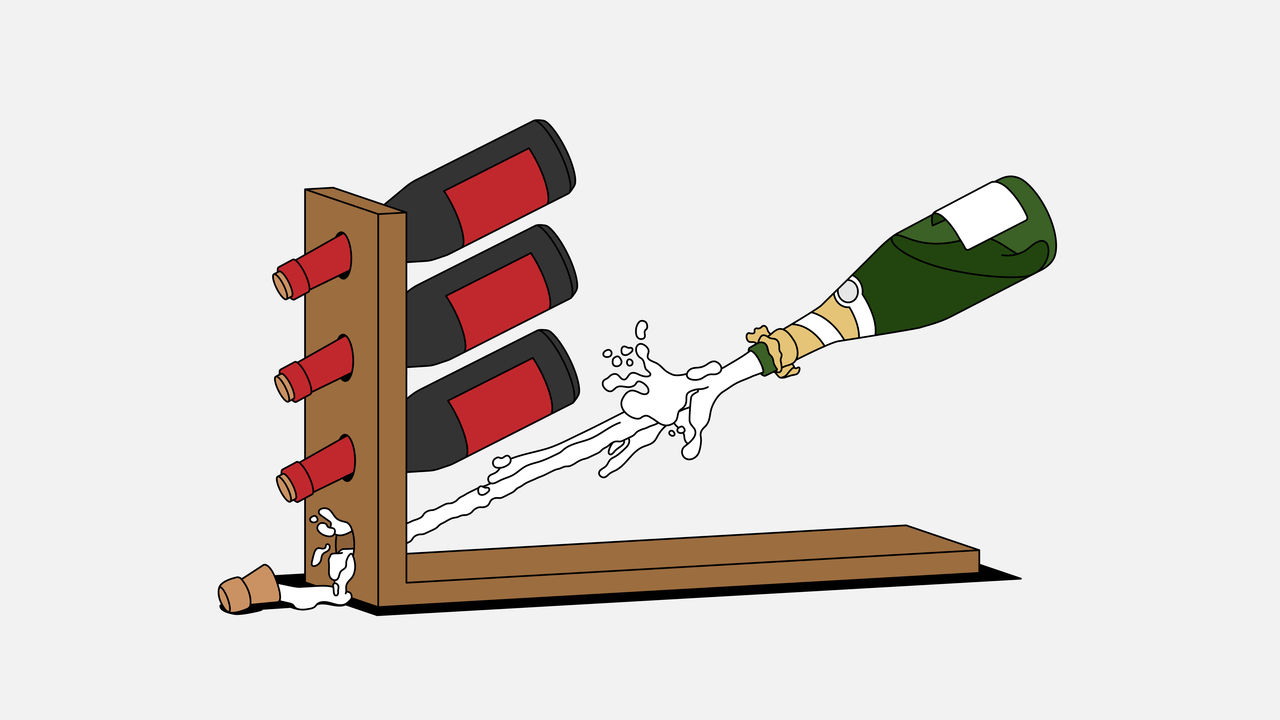
Wine Collectors Are At Last Taking Champagne Seriously
Wine collectors are at last taking champagne seriously. For years, the bubbly nectar was often relegated to celebratory toasts, overlooked by serious collectors focused on the aged grandeur of Burgundies or the bold tannins of Cabernet Sauvignon. But a seismic shift is underway. This isn’t just about popping open a bottle at a party; we’re talking about rare vintages, meticulous aging, and substantial investment potential.
The perception of champagne is evolving, and collectors are finally recognizing its place among the world’s most prestigious wines.
This newfound appreciation is fueled by several factors. Increased investment potential in fine champagne is driving a surge in interest, mirroring the trends seen in other collectible wines. Moreover, advancements in winemaking and aging techniques are producing champagnes of unprecedented quality and longevity, capable of rivaling the most sought-after vintages from other regions. This, combined with the allure of rare and historically significant bottles, is creating a dynamic and exciting market for champagne collectors.
The Shifting Perception of Champagne: Wine Collectors Are At Last Taking Champagne Seriously
For decades, serious wine collectors often relegated Champagne to the realm of celebratory bubbles, a delightful but ultimately frivolous beverage unworthy of the same consideration given to age-worthy Burgundy or complex Bordeaux. This perception, however, is rapidly changing, with Champagne finally gaining the respect it deserves within the elite circles of wine connoisseurship.Champagne’s previous lack of serious consideration stemmed from a combination of factors.
Its inherent effervescence, often associated with celebratory occasions rather than thoughtful contemplation, contributed to its image problem. Furthermore, the vast production of less-expensive, readily available Champagnes overshadowed the complexities and nuances of higher-quality, age-worthy examples. The perception of Champagne as a solely youthful wine, best enjoyed immediately, further solidified its place outside the purview of serious collectors who prized wines with significant aging potential.
Reasons for Champagne’s Previous Overlooking
The traditional view of Champagne was primarily shaped by readily available, mass-produced examples. These often lacked the complexity and depth found in aged wines from other regions. The focus on immediate consumption, encouraged by the celebratory nature of the drink, discouraged the kind of long-term cellaring that serious collectors prioritize. This, coupled with the lack of detailed information about the production techniques and the diversity of styles within Champagne, contributed to a lack of understanding and appreciation amongst collectors.
The emphasis on brand recognition over nuanced terroir expression further reinforced this perception.
The Evolution of Attitudes Towards Champagne
In contrast to the past, the current view of Champagne is increasingly nuanced and sophisticated. Serious collectors are now recognizing the incredible potential for aging in certain Champagnes, with some vintages developing remarkable complexity and depth over decades. The growing appreciation for the diverse terroirs of Champagne, the influence of different grape varietals, and the varying styles of production—from Blanc de Blancs to Rosé—has broadened the understanding and interest amongst connoisseurs.
This shift is driven by increased accessibility to high-quality, age-worthy Champagnes and the efforts of producers to educate consumers about the nuances of their wines.
Events and Trends Contributing to the Shift
Several events and trends have catalyzed this significant shift in perception. The rise of independent, grower-Champagne producers (“récoltant-manipulants”) has brought a renewed focus on terroir and traditional methods, resulting in wines of exceptional quality and complexity. Increased media coverage, including dedicated publications and online forums, has helped disseminate information about the nuances of Champagne and the potential for aging.
Finally, the growing number of blind tastings and competitions featuring Champagne alongside other prestigious wines has helped demonstrate its ability to stand shoulder-to-shoulder with the world’s greatest wines. The recognition of exceptional aged Champagne in auctions further solidifies its position as a serious collectible.
Factors Driving Increased Interest in Collectible Champagnes
The world of fine wine collecting is experiencing a seismic shift, with Champagne finally taking its rightful place alongside the most prestigious Bordeaux and Burgundies. This surge in interest isn’t just a fleeting trend; it’s driven by a confluence of factors that are solidifying Champagne’s position as a serious investment and a coveted addition to any discerning collector’s portfolio.The increased interest in collectible Champagnes is multifaceted, encompassing financial incentives, improved production techniques, and the allure of rare and prestigious vintages.
It’s fascinating how wine collectors are finally appreciating the nuances of champagne, moving beyond simple celebratory bubbles. This shift in connoisseurship reminds me of the recent upheaval at OpenAI – reading about what does the openai exodus say about sam altman made me think about how even established power structures can be disrupted. Just like champagne is gaining a new level of respect, maybe we’re seeing a similar reevaluation of leadership styles in the tech world.
And back to those incredible champagnes, the aging process is just as complex and fascinating.
These elements work in synergy, creating a perfect storm that propels the market upward.
Investment Potential of Fine Champagne
Champagne’s investment potential is a significant driver of its rising popularity among collectors. Historically viewed as a celebratory beverage, rather than a long-term investment, the market is now demonstrating impressive growth potential, particularly for rare and highly-rated vintages. This is fueled by several factors: limited production, increasing global demand, and the growing recognition of Champagne’s aging capabilities, which mirror those of other prestigious wines.
The potential for substantial returns on investment, mirroring the returns seen in other collectible markets, is attracting both seasoned collectors and newcomers. For example, certain prestige cuvées from houses like Krug and Dom Pérignon have shown remarkable appreciation in value over the past decade, exceeding the returns of many traditional investment vehicles.
Improved Winemaking and Aging Techniques
Advances in viticulture and winemaking techniques have significantly enhanced the quality and longevity of Champagne. Precise vineyard management, advanced fermentation processes, and meticulous aging in cellars contribute to the production of Champagnes with exceptional complexity and depth. These improvements not only enhance the drinking experience but also increase the wines’ potential for long-term cellaring, further bolstering their appeal to collectors who appreciate the nuances of aged Champagne.
The focus on sustainable practices and biodynamic farming is also contributing to the elevated quality and increased desirability of certain Champagnes.
Rare and Highly Sought-After Champagnes
The allure of rarity is a powerful force in the collectible wine market, and Champagne is no exception. Certain vintages, particularly those produced during exceptional years with optimal climatic conditions, command astronomical prices. For instance, the 1988 vintage from Salon is often cited as one of the most highly sought-after Champagnes, due to its exceptional quality and extremely limited production.
Similarly, older vintages from prestigious houses like Krug, Dom Pérignon, and Bollinger, particularly those from exceptional years, consistently fetch impressive prices at auction and in private sales. The scarcity and inherent quality of these Champagnes contribute to their elevated status and their ever-increasing value. These rare bottles are not just wines; they are pieces of history, reflecting the pinnacle of Champagne production.
The Characteristics of Collectible Champagnes

So, you’re intrigued by the world of collectible champagne? It’s more than just popping open a bottle for a celebration; it’s an investment in history, craftsmanship, and a truly luxurious experience. Understanding what makes a champagne collectible is key to navigating this exciting market. This post will delve into the specific characteristics that elevate a bottle from a celebratory drink to a prized possession.
Key Characteristics Defining Collectible Champagnes
Several factors contribute to a champagne’s collectibility. These characteristics, when present, significantly impact the bottle’s value and desirability among connoisseurs and investors. The following table summarizes these key elements.
It’s exciting to see wine collectors finally appreciating champagne’s complexity, moving beyond simple celebratory bubbles. This shift in focus reminds me of another surprising revelation: the timing of the Trump impeachment probe, as highlighted in this recent article, dem court filing suggests trump impeachment probe began before mueller even submitted report , which was equally unexpected. Just like discovering a rare vintage, the details surrounding the probe are fascinating, but ultimately, I’m back to celebrating the resurgence of champagne’s prestige among serious collectors.
| Characteristic | Description | Impact on Value | Examples |
|---|---|---|---|
| Prestige of the House | Reputation and history of the Champagne house, including its winemaking techniques and legacy. | Highly influential; established houses command higher prices. | Dom Pérignon, Krug, Cristal |
| Vintage Year | Exceptional vintages with favorable weather conditions producing superior quality grapes. | Exceptional vintages significantly increase value; particularly rare or highly-rated years. | 1988, 1996, 2002 Dom Pérignon |
| Rarity | Limited production, special releases, or bottles from discontinued cuvées. | Extreme rarity dramatically increases value; scarcity drives demand. | Limited edition Jeroboams or Methuselahs; discontinued cuvées. |
| Condition | The physical state of the bottle, including the label, cork, and fill level. | Imperfect condition significantly reduces value; pristine condition is crucial. | Perfect label, undamaged cork, full fill level. |
| Provenance and History | The documented history of the bottle, including its ownership and storage conditions. | Strong provenance significantly boosts value; a documented history adds authenticity. | Bottles with original purchase receipts or provenance from a reputable collector. |
Visual Appeal of a Highly Collectible Champagne Bottle
Imagine a bottle of Dom Pérignon Oenotheque, a vintage from a legendary year. The bottle itself is a work of art. The deep amber hue of the aged champagne is visible through the elegant, clear glass. The label, crisp and pristine despite the passage of years, bears the iconic Dom Pérignon branding, a testament to its heritage. The cork, perfectly intact, is a subtle promise of the exquisite liquid within.
The entire presentation exudes an aura of sophistication and timeless elegance, a visual representation of the luxury and prestige contained within. The slightest imperfection would detract from this carefully curated aesthetic, impacting its value considerably.
It’s exciting to see wine collectors finally appreciating the nuanced world of Champagne; it’s a serious business, not just bubbly for celebrations. I mean, seriously, while I’m pondering my next vintage, I read that the us government seized over 11000 non classified documents from trumps home , which is a whole other level of serious collecting! But back to Champagne – the depth of flavor and the incredible aging potential are finally getting the recognition they deserve.
Provenance and History’s Impact on Value
Provenance—the documented history of a champagne bottle—is a critical factor influencing its value. A bottle with a verifiable history, perhaps accompanied by original purchase records, auction records, or letters from previous owners, commands a significantly higher price than an identical bottle lacking such documentation. For example, a bottle of Cristal from a prestigious vintage, owned by a famous celebrity and subsequently authenticated, would fetch a far greater price than a similar bottle with an unknown history.
The story behind the bottle, its journey through time and hands, adds to its allure and significantly increases its worth, transforming it from a mere bottle of champagne into a piece of living history.
Investing in and Collecting Champagne

The allure of collecting fine champagne extends beyond mere enjoyment; it represents a tangible investment opportunity with the potential for significant returns. However, navigating this world requires careful consideration of acquisition, storage, and ethical practices. This section provides a practical guide for building a successful and responsible champagne collection.
Acquiring Collectible Champagnes, Wine collectors are at last taking champagne seriously
Building a collection begins with informed purchasing. Research is paramount. Understanding the history, reputation, and critical acclaim of specific houses and vintages is crucial. Start by exploring reputable auction houses like Christie’s and Sotheby’s, as well as specialized wine merchants who deal in rare and collectible champagnes. Attend tastings and auctions to expand your knowledge and network with other collectors.
Don’t be afraid to seek advice from experienced sommeliers or wine consultants; their expertise can be invaluable in identifying promising investments. When purchasing, always verify the provenance and authenticity of the bottles, checking for any signs of tampering or damage. Consider building a relationship with a trusted merchant who can provide provenance documentation and guarantee the quality of the champagne.
Finally, diversify your portfolio; don’t invest solely in one producer or vintage.
Champagne Storage Methods
Proper storage is critical to preserving the quality and value of your collection. Champagne is sensitive to light, temperature fluctuations, and vibrations. Ideal storage conditions involve a cool, dark, and consistently humid environment with minimal vibration. Several storage options exist, each with its own advantages and disadvantages.
| Storage Method | Advantages | Disadvantages |
|---|---|---|
| Dedicated Wine Cellar | Optimal temperature and humidity control; minimizes light and vibration. | High initial investment; requires significant space. |
| Climate-Controlled Wine Refrigerator | More affordable than a cellar; suitable for smaller collections. | Limited capacity; may not offer the same level of humidity control as a cellar. |
| Professional Wine Storage Facility | Provides professional management and insurance; ideal for large collections. | Ongoing storage fees; less personal control over the collection. |
Choosing the right method depends on the size of your collection and your budget. Regardless of the method, ensure that bottles are stored on their sides to keep the cork moist and prevent it from drying out.
Ethical Considerations in Champagne Collecting
The ethical dimensions of collecting rare and valuable champagnes should not be overlooked. Responsible collecting involves a commitment to sustainability and fair practices. Support producers who are committed to environmentally friendly viticulture and ethical labor practices. Avoid purchasing champagnes obtained through illicit means, such as theft or smuggling. Consider donating a portion of your collection or its proceeds to charitable causes that support the champagne industry or related environmental initiatives.
Transparency and responsible sourcing should be central to your collecting philosophy. For example, supporting a champagne house known for its sustainable practices, such as those employing biodynamic or organic methods, aligns with ethical collecting.
Hypothetical Champagne Investment Portfolio
A diversified portfolio is key to mitigating risk. This hypothetical portfolio focuses on a mix of established houses and emerging producers, spanning various vintages and styles.
| Champagne House | Vintage(s) | Rationale |
|---|---|---|
| Dom Pérignon | 1996, 2002, 2008 | Established reputation; consistent track record of quality and appreciation. |
| Krug | 1998, 2000, 2006 | Exceptional quality and complexity; strong collector demand. |
| Salon | 2002, 2006 | Rare and highly sought-after; limited production. |
| Jacques Selosse | Sublime, Initial, etc. (selection based on availability and vintage performance) | Rising star; high critical acclaim and growing collector interest. |
This portfolio represents a starting point. The specific vintages and quantities should be adjusted based on individual risk tolerance and market conditions. Regular monitoring of the market and expert advice are crucial for optimizing investment returns. Remember that this is a hypothetical portfolio, and actual performance may vary. Past performance is not indicative of future results.
The Future of Champagne Collecting

The champagne market, once considered a realm of celebratory indulgence, is rapidly evolving into a sophisticated investment landscape. The increasing interest in collectible champagnes signals a shift, mirroring the trajectory of other fine wine markets. This burgeoning interest presents both exciting opportunities and significant challenges for collectors.The collectible champagne market is poised for continued growth, driven by factors such as increased global affluence, a rising appreciation for luxury goods, and the inherent scarcity of truly exceptional vintages.
However, navigating this market requires a keen understanding of the forces shaping its future.
Predictions for the Collectible Champagne Market
The future of collectible champagne will likely see increased specialization. Collectors will focus on specific houses, growers, and even individual cuvées, leading to the emergence of niche markets with highly sought-after bottles. We can expect to see greater transparency in the market, driven by improved provenance tracking and authentication technologies. This will enhance investor confidence and protect against counterfeiting, a significant concern in the luxury goods sector.
Furthermore, the rise of online platforms specializing in fine wine trading will democratize access to collectible champagnes, allowing a broader range of collectors to participate. The growth of the market will also depend on the continued production of high-quality champagnes, which is increasingly challenged by climate change. For example, the increasing popularity of grower champagnes (champagnes made by the same producers who grow the grapes) suggests a future trend towards greater appreciation for terroir and artisanal production methods.
Challenges and Opportunities Facing Champagne Collectors
The challenges facing champagne collectors are multifaceted. The primary concern is authenticity. Counterfeit champagnes represent a significant risk, requiring collectors to exercise due diligence and utilize reputable sources. Another challenge is storage. Maintaining optimal storage conditions for champagne is crucial to preserving its quality and value.
This necessitates investment in climate-controlled cellars or specialized storage facilities. Opportunities, however, abound. The increasing recognition of champagne as a viable investment asset creates potential for significant returns. Furthermore, the relatively young age of the collectible champagne market presents opportunities for early adopters to build impressive portfolios. The rise of specialized auction houses and online marketplaces is creating more accessible entry points for collectors.
The Impact of Climate Change on Champagne Production
Climate change presents a significant threat to champagne production. Rising temperatures and altered weather patterns can impact grape yields, negatively affecting the quality and consistency of champagne. Increased frequency of extreme weather events, such as hailstorms and droughts, can further disrupt production and lead to scarcity of certain vintages, potentially driving up prices for desirable bottles. For instance, the 2003 heatwave in France resulted in a significantly smaller harvest and consequently increased the value of the few bottles produced from that year.
This underscores the growing impact of climate variability on the future supply and therefore the price of collectible champagnes. The industry is actively exploring adaptation strategies, such as adjusting grape varieties and implementing sustainable farming practices, but the long-term impact remains uncertain.
The Future Trajectory of a Specific Champagne House
Consider the hypothetical trajectory of a smaller, family-owned champagne house, Domaine X, known for its unique terroir and meticulous production methods. As awareness of high-quality grower champagnes increases, Domaine X’s reputation grows. Its limited-production, single-vineyard champagnes become highly sought after by collectors. Strategic partnerships with influential sommeliers and collectors further elevate its profile, leading to increased demand and consequently higher prices at auction.
This increased demand, coupled with the challenges of maintaining production quality in a changing climate, creates a scenario where Domaine X’s older vintages become increasingly rare and valuable, cementing its place among the most coveted collectible champagnes.
The world of collectible champagne is no longer a niche pursuit; it’s a burgeoning market attracting discerning collectors and savvy investors alike. The increased recognition of champagne’s potential for long-term appreciation, coupled with the artistry and heritage of its production, promises a bright future for this effervescent investment. As collectors continue to discover the depth and complexity of exceptional champagnes, we can expect to see even greater interest, pushing the boundaries of what’s possible in the world of fine wine collecting.
The rise of champagne is a testament to the enduring power of quality, history, and the undeniable allure of a perfectly aged bottle.

